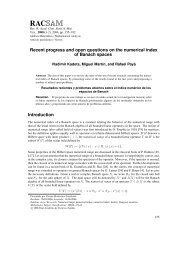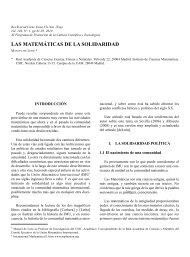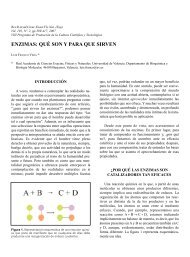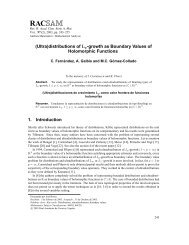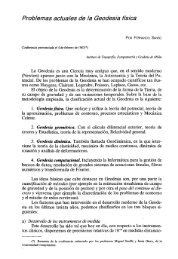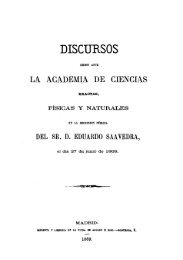The water footprint and virtual water exports of Spanish tomatoes
The water footprint and virtual water exports of Spanish tomatoes
The water footprint and virtual water exports of Spanish tomatoes
- No tags were found...
You also want an ePaper? Increase the reach of your titles
YUMPU automatically turns print PDFs into web optimized ePapers that Google loves.
D. CHICO et al. 7to final consumers, businesses <strong>and</strong> policymakers in general.From a global perspective, about 86% <strong>of</strong> all <strong>water</strong> is usedto grow food (Hoekstra <strong>and</strong> Chapagain, 2008). Parallel tothis, food choices can have a big impact on <strong>water</strong> dem<strong>and</strong>.From the production perspective, agriculture has to competewith other <strong>water</strong> users like the environment, municipalities<strong>and</strong> industries (UNESCO, 2006).In Spain, tomato production represents 5% <strong>of</strong> the grossnational agricultural production with a yearly average production<strong>of</strong> about 4 million tons in 62,939 ha. In economicterms, tomato production represents a 6.6 % <strong>of</strong> the gross nationalagricultural production in the study period (MARM,2010b). Of this production, around 25% is exported eachyear, mainly to the European Markets as fresh tomato(Reche, 2009). Tomato production in Spain represents 1.5%<strong>of</strong> the total <strong>Spanish</strong> <strong>water</strong> <strong>footprint</strong> (Garrido et al., 2010).<strong>The</strong> main producing areas are the Guadiana Valley in southwestSpain, <strong>and</strong> the southeast corner in the provinces <strong>of</strong>Almería, Murcia <strong>and</strong> Granada (Figure 1). <strong>The</strong>se two regionsare quite different in their production methods. <strong>The</strong> Guadianavalley produces almost exclusively open-air, irrigated<strong>tomatoes</strong> (Campillo, 2007) for the food industry (i.e. inputfor tomato sauce <strong>and</strong> powder transformation), using surface<strong>water</strong> from the Guadiana valley (CHG, 2008; Aldaya <strong>and</strong>Llamas, 2009), whereas the southeast region, mainly thecoastal plain <strong>of</strong> Almería province, has developed the highestconcentration <strong>of</strong> greenhouses in a particular area <strong>of</strong> theworld (Castilla, 2009). Its dynamic production has evolvedfrom primary greenhouses to more complex <strong>and</strong> developedgrowing systems that produce high quality horticulturalcrops for export throughout the year (García 2009), almostexclusively out <strong>of</strong> ground<strong>water</strong> (Regional Government <strong>of</strong> Andalusia2003). Along these two regions, tomato productionwas traditionally significant in other parts <strong>of</strong> the country,where, although declining, tomato production is still impor-





